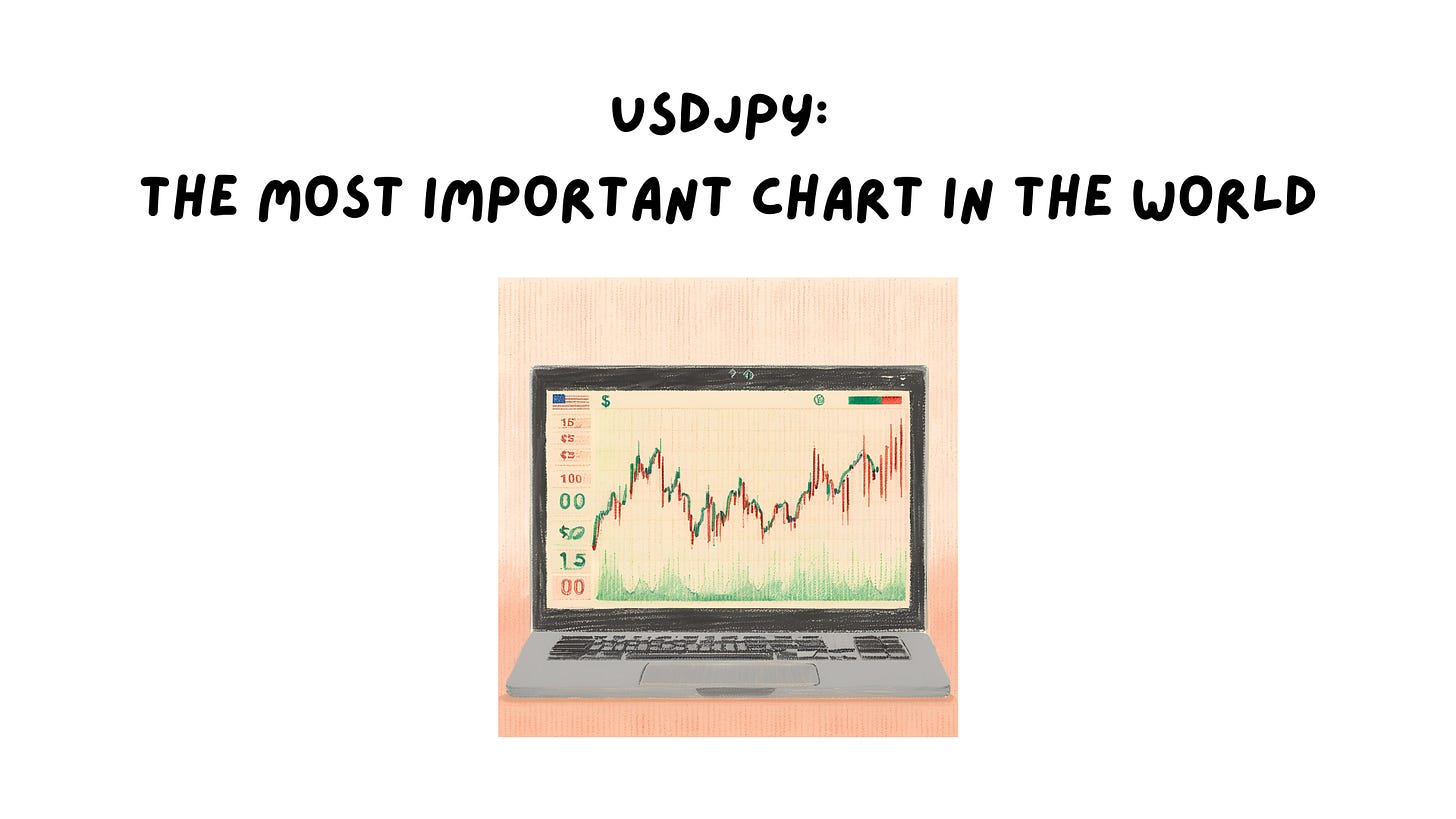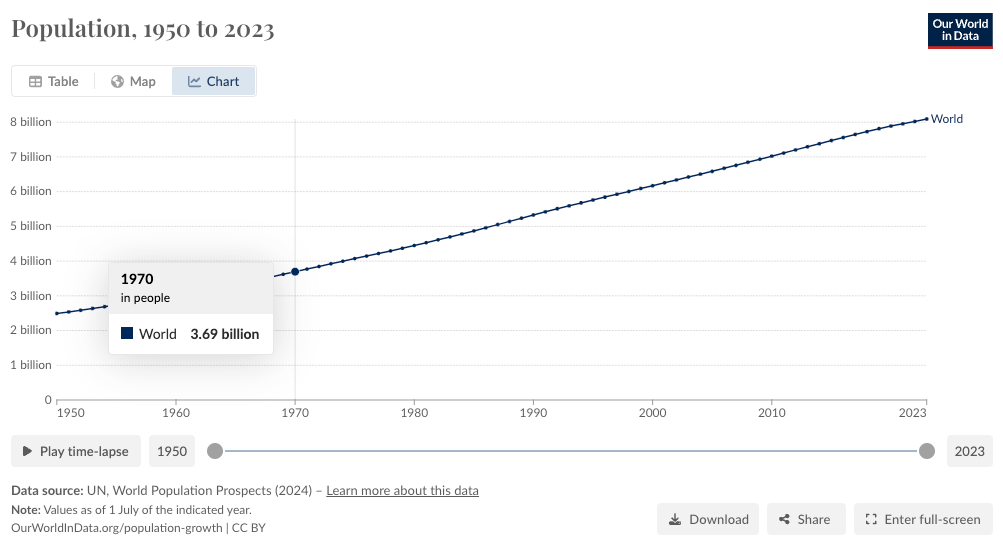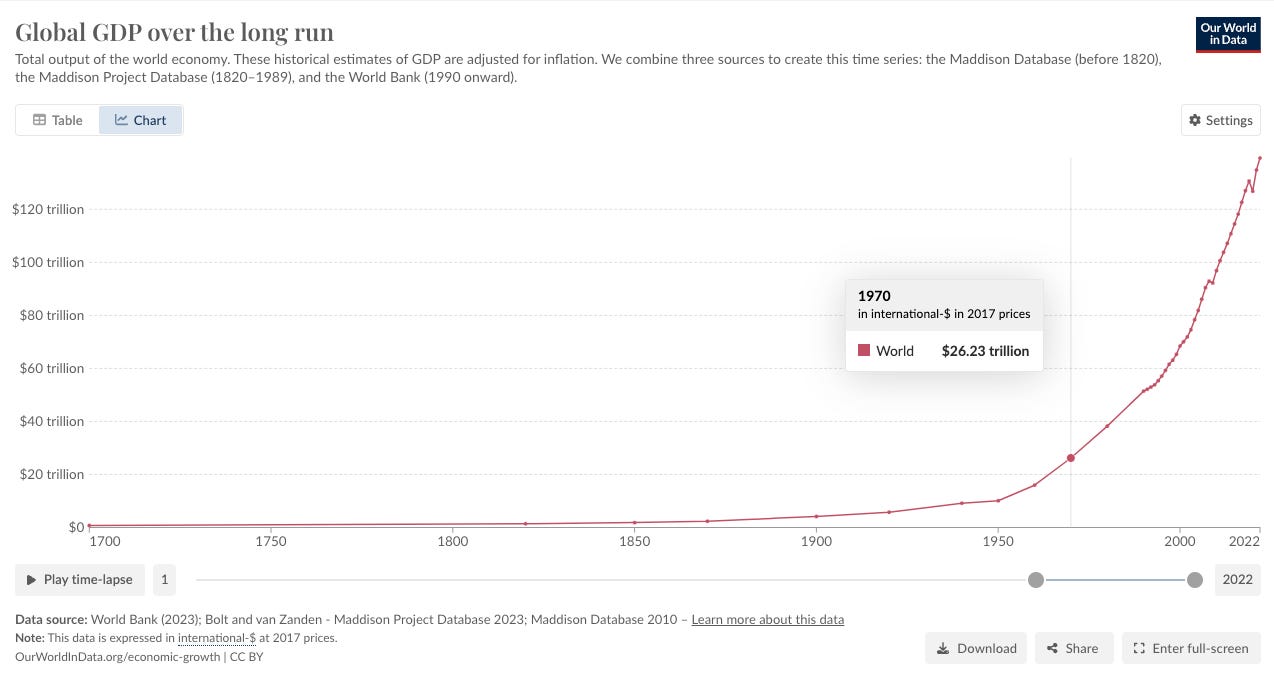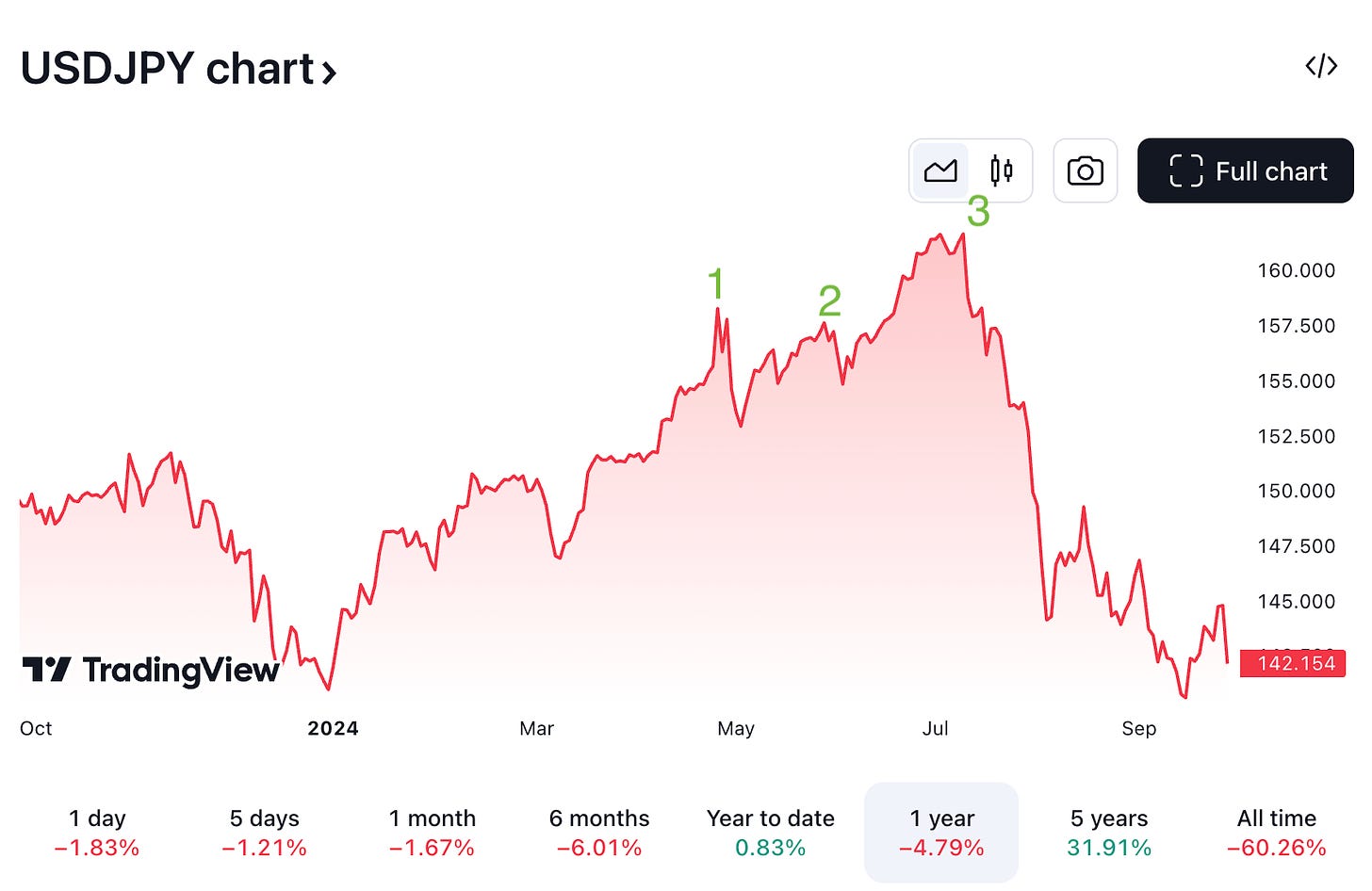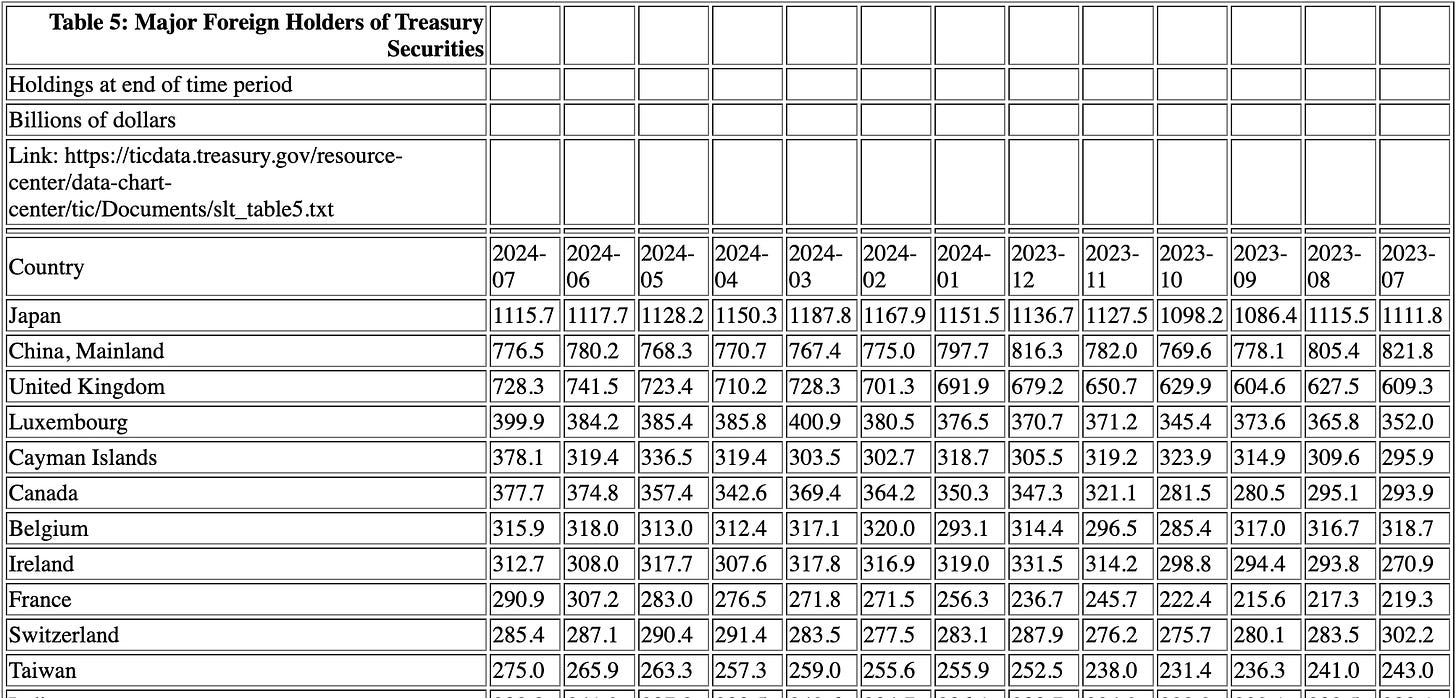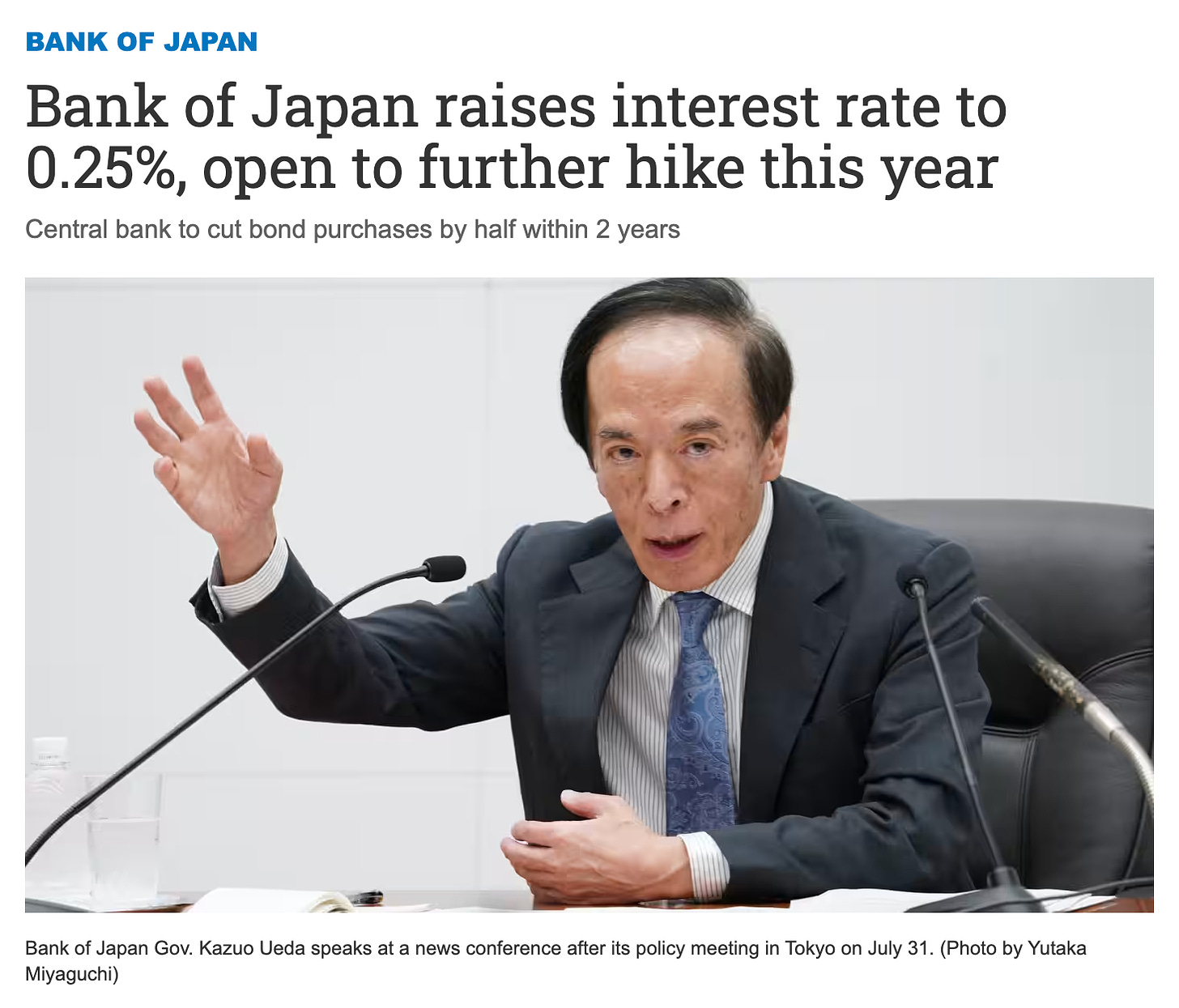Typically I get obsessed about sure matters to the purpose the place I can’t cease studying about them and each adjoining subject required to grasp that subject. The Japanese Yen has been the beneficiary of my passionate love for the previous few months. Ask any of my buddies they usually’ll inform you how annoying I might be about it in the event you set off me about it. Relatively than re-explaining all of it a number of instances I assumed why not simply write an article to consolidate my information into one weblog publish. That is that publish.
I’m not a macro-economics skilled — removed from it. My highest qualification is being a pc science dropout in Sydney. If there’s one thing that I’ve bought fallacious about this otherwise you’d wish to get clarification on, please do let me know as I’m all the time desirous to study and enhance!
Okay disclaimers apart, lets get began. With a purpose to perceive why the Japanese Yen impacts your life, we’ll must set a superb quantity of context first.
The fashionable financial system depends one key driver to maintain the social gathering crashing down: development, measured by means of GDP. So long as the speed of development is quick sufficient, previous debt doesn’t matter as a result of the spoils of the longer term will repay the money owed of the previous. This technique has largely labored for a lot of economies and currencies because the US Greenback bought off the gold customary and ended convertibility within the 70s. We now dwell by a corrupt philosophy referred to as Trendy Financial Principle which states authorities spending shouldn’t be restrained by debt as a result of they will merely print cash out of skinny air.
After we take into consideration GDP there’s two key components we have to take into account:
-
How many individuals are there that may work? This may be chalked as much as the variety of in a position, working folks.
-
How efficient are these folks at working? That is mainly our stage of technological development.
This has largely been okay since we’ve had just a few large drivers of development. The primary being the world merely has extra folks in it. Since 1970, we’ve greater than 2x’d the inhabitants from 3.7b folks to eight.09b. That’s a fairly productive world as a result of there’s extra folks that may work!
However what about our development in know-how? Nicely that’s an entire new story. Beneath is the chart of complete GDP of the world for the previous 300 years. After we found MMT (fashionable financial concept) it in all probability made sense as a result of even from 1950 to 1970 the world’s GDP elevated from $10t to $26t. “Money owed be damned after we’re rising like loopy”, stated each authorities!
The social gathering has been largely okay for a very long time, though someplace alongside the road governments forgot two key factors:
-
Though international GDP could enhance, your nation must be growing it’s GDP and play its half in international development
-
You need to monitor your charge of development in opposition to your GDP to make sure you’re not placing an enormous debt saddle on your self
You’ll assume that’d be widespread sense. Sadly not. Whenever you management the cash printer, the attract of the button might be exhausting to withstand.
That is sort of the entire premise of what we’re going to be discussing: how a lot are you rising versus how a lot debt have you ever taken on. If you wish to simplify this, consider it as your bank card invoice versus what your future revenue incomes potential is.
Sadly Our World in Knowledge doesn’t have lovely graphs so I’ve needed to pull these from this information from the Worldwide Financial Fund (IMF) and it goes again 200 years. I included key international locations so you may higher perceive how everybody ranks in opposition to everybody.
As you may see there’s one nation that’s MASSIVELY over relative to everybody else… seems that’s the nation that this whole article is predicated off. Okay so why are these large money owed not a difficulty? Nicely I oversimplified a little bit earlier than. The federal government is sort of a degenerate YOLO gambler that claims “look bro, so long as I can afford my repayments each month, who cares what my debt is!”. I promise you that’s not false.
Now how are these rates of interest set? Nicely that’s one other rabbit gap about how central banking and bonds work. I’ll attempt to keep away from taking place that rabbit gap by merely saying that a part of Japan has racked up a ton of debt. This has been by artificially retaining its price of debt low by printing their foreign money to purchase debt. If that appears like lots to digest don’t fear. Mainly the Financial institution of Japan (their central financial institution) prints cash and does humorous issues. One instance of that is the actual fact they personal ~11% of the inventory market from cash they created out of skinny air.
From the interval of 2013 – 2023 Japan mainly engaged in it’s humorous enterprise referred to as Abe-nomics by artificially retaining rates of interest as little as 0% or typically even negatively! It is a key element to recollect. Why? Nicely as a result of it doesn’t matter how a lot debt you accrue in case your rate of interest is 0% (you’ll by no means must pay cash for repayments). By no means thoughts you’re the social gathering that units the rate of interest at 0 although. Life is nice! Proper? We’ll examine again with Japan later.
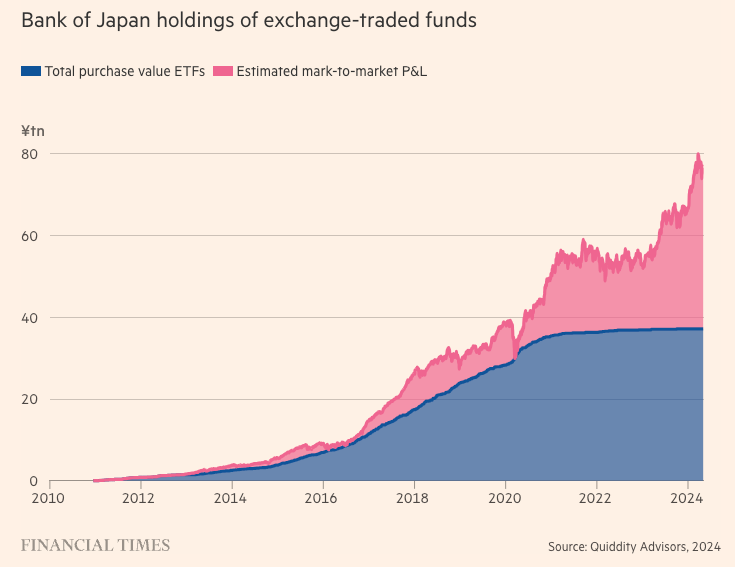
Okay lets flip our consideration to the second offender on the listing relating to Debt to GDP: america. They’ve additionally been having enjoyable printing a lot of monopoly {dollars} to maintain funding their wars and worldwide support.
For the previous 5-10 years, as rates of interest have been low their curiosity compensation payments haven’t actually been that problematic. As they raised from 0% to five% that tax invoice out of the blue bought actually large.
I’m going to make use of 2023 numbers since they’re full. The US federal authorities earned $4.8t in tax revenues throughout the interval of 2023. They spent $6.35t throughout the identical time leaving them in a deficit of $1.5t. What are they spending this cash on? The desk beneath outlines every thing we want.
As we are able to see internet curiosity funds costed $635b in 2023 alone and finally on-pace to $1t by 2028 (assuming excessive rates of interest).
Now the query is the place does that shortfall come from? Nicely that is the place it begins to get a little bit extra attention-grabbing. Keep in mind, so long as they will service the repayments, the social gathering can preserve happening. It doesn’t matter how a lot the whole invoice is.
The federal government covers this shortfall by issuing bonds. The literal definition of threat free charge on this planet is the yield that US authorities bonds pay out, they’re presupposed to be the most secure instrument for buyers to park their cash and earn money in. So what the US authorities does is take full benefit of this by issuing new bonds so as to pay the curiosity of the outdated bonds maturing (being due for fee). It’s fairly actually Terra/Luna however the whole world participates within the ponzi scheme. After they can’t borrow, the Federal Reserve can step in and print contemporary US {dollars} to purchase the bonds. That is referred to as an “Open Market Operation”. The FED also can do extra funky issues like purchase stonks and different issues, that is what the Financial institution of Japan does as we outlined earlier.
What’s attention-grabbing about bonds is that the extra you difficulty/promote (add provide to the market), their worth goes down and their yield goes up. This implies buyers can earn a excessive charge of curiosity the extra bonds are issued on the open market. It additionally means the federal government pays the next price of borrowing capital.
Keep in mind: massive deficit → extra bond gross sales → decrease bond costs → greater bond yields = costlier to borrow.
Konichiwa, now that we’ve taken a little bit detour to america, it’s time to return again to Japan. Now we have two international locations operating two completely different methods at a macro stage now:
-
Japan printing a lot of cash to artificially preserve bond yields low subsequently borrowing low-cost (near 0%)
-
United States elevating rates of interest to curb inflation but additionally paying greater yields on money owed as extra bonds are issued
Consequently this opens up what is called a “Carry Commerce” for buyers. The concept is you may borrow Yen, promoting Yen for USD (inflicting downwards stress on the Yen and the USD stronger) then lending the USD to earn 5% whereas paying near 0% on the borrowed Yen. It’s nearly like free cash to buyers who can skilfully play the commerce (though many lose cash). Should you have a look at the buying and selling quantity of USD/JPY it’s one of the vital liquid on this planet with trillions of {dollars} in quantity!
There’s just a few issues that you must perceive about this chart at a meta stage earlier than we discuss specifics of it.
-
The upper this chart goes, it means the Yen is getting weaker. A weaker Yen isn’t essentially unhealthy since exports change into extra aggressive (cheaper for different international locations shopping for issues priced in Yen), though imports change into costlier (shopping for issues in USD prices for extra for the Japanese folks).
-
The decrease this chart goes, it means the Yen is getting stronger. This makes imports cheaper however makes exports much less aggressive.
-
Given the selection between the 2, Japanese usually chooses a coverage of a weaker Yen so as to promote exports as that’s how its financial system thrives.
The issue comes when the Yen swings too exhausting in a specific path because it throws their financial system out of stability. From the beginning of 2024 to July (Level 3 on the chart, the Yen devalued near 12.5% (140 → 160) in 7 months! This isn’t wholesome given the fast charge of change. So what the Japanese authorities did was use their USD reserves to purchase Yen, thus making it stronger.
As you see on the chart above, these “interventions” are when the worth drops sharply (level 1 and a couple of). They made a number of throughout that interval however I’m simply highlighting the primary ones. The whole price of those interventions was round $50b over the course of some months. Nevertheless, every intervention led to the worth quickly climbing again to the place it was and taking pictures previous!
So what choices does Japan have realistically:
-
Proceed to promote USD for JPY: not sustainable and likewise a waste of cash as worth comes again to the place it was.
-
Elevate rates of interest: not possible given large debt quantity. Most mortgages in Japan are variable based mostly. Rising the price of capital would screw their very own financial system, however remedy the issue.
However there’s a 3rd possibility! Begin promoting treasury bonds. In a loopy twist of occasions, Japan is the biggest holder of US bonds within the ENTIRE WORLD. The beneath is straight from the US Treasury.
Japan is available in #1 with $1.1T value of US bonds. Now bear in mind again to our part on bonds, if Japan began promoting these bonds on the open market to defend their very own peg, it’d trigger bond costs to go down and the yields go up, which in flip makes borrowing costly for the US authorities and the remainder of the world! Sure. If that was to occur you’d want some type of quantitive easing to treatment the scenario. That is the crux of why USDJPY is crucial chart, hidden inside it’s the interconnected relationships of the worldwide monetary financial system.
However as we are able to see within the USDJPY chart, it isn’t going up anymore, it’s down unhealthy. So what occurred?
On July 31, 2024 they did what nobody thought they’d do: increase rates of interest.
Although the increase was 0.25%, it made the carry commerce much less worthwhile which is problematic when you’ve gotten very massive quantities of leverage being utilized (evident by means of the multi trillion greenback commerce quantity). Consequently, loads of the leverage within the USDJPY carry commerce unwinded in a single day inflicting an immediate market crash as merchants/buyers wanted to promote different belongings to cowl the shortfall.
6 days later they got here out with this assertion.
Lmao. So clearly they will’t increase charges as exhausting as they’d like as a result of the whole international financial system is watching them and making stonks go down, particularly earlier than the US elections isn’t fascinating. Nevertheless, their willingness to lift charges creates an extra downside: because the carry commerce unwinds, markets will go down. However perhaps Japan says that’s okay.
Checkmate although: in the event that they proceed to lift charges then the price of their borrowing goes up they usually have already got A LOT of debt (bear in mind the 260% debt-to-GDP ratio in the beginning of this text). The one option to get out of that state of affairs can be to print Yen to pay again the debt, which might in flip weaken then Yen, this time from their very own undoing.
However right here’s the place it turns into extra attention-grabbing. The Federal Reserve just lately lower charges by 50 bps. Whereas that is nice for the price of capital taking place, it means the carry commerce is much less worthwhile and can additional unwind placing downwards stress on markets and making a stronger Yen. The stronger Yen can be unhealthy for his or her financial system because it makes their exports much less aggressive. The Japanese want the carry commerce, and have relied on it for the previous 10-20 years.
Whereas it did take some time, as you may see the Yen is intrinsically very interconnected to the SS given the big quantity of US debt it holds on stability sheet. Whereas many assume that Japan is only a good nation to be a vacationer in, the state of their financial system has a really direct impression on the worldwide financial system. I don’t declare to foretell what’s going to occur, nonetheless I hope that by means of this text you’ve gotten an amazing appreciation and understanding of the interconnected nature of all these variables.
You need to hopefully now be capable to learn a jobs report information on Japan and be capable to assume the way it will impression the Japanese financial system, the Yen and finally the bond yields at a excessive stage.
Should you discovered this all tremendous attention-grabbing I extremely suggest studying Arthur Hayes’ weblog
and/or selecting up a ebook on macro economics. You’ll study a lot and hopefully have enjoyable realising how historical past, economics, cash and politics are ever-so intertwined.



